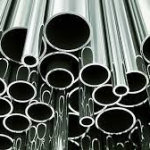 The trigger for the latest rise was news of a military coup over the weekend in Guinea, a major producer of bauxite, which is processed into alumina and then into primary aluminium.
The trigger for the latest rise was news of a military coup over the weekend in Guinea, a major producer of bauxite, which is processed into alumina and then into primary aluminium.
The aluminium market does not normally pay much attention to disruptions at the end of the bauxite supply chain. It is, after all, the most common metallic element, accounting for about 8% of the earth’s crust, and production losses have historically been quickly compensated for.
No one expects this time to be any different, even assuming that the military coup leaders were willing to jeopardise one of the country’s main sources of foreign revenue.
However, the political upheaval in Guinea catches the aluminium commodity chain at a vulnerable time, with alumina prices already rising due to refinery problems in Brazil and Jamaica.
Over the past decade, Guinea has emerged as one of the world’s largest producers of bauxite. The West African nation produced 78 million tonnes of bauxite last year, accounting for about 22% of global production.
With only one domestic alumina refinery, its importance in the third-party market is clearer and the country is a major supplier to refineries in Europe, North America and especially China.
China’s bauxite imports have grown strongly in recent years due to the deterioration in the quantity and quality of domestic bauxite reserves. Bauxite imports totalled 30 million tonnes in 2010. Last year they reached 112 million tonnes, 47% of which came from Guinea.
Fortunately for China’s import-dependent refineries, the direct impact of the coup in Conakry on bauxite mining regions seems to have been mitigated so far. Chinese refineries are also very well supplied with an estimated 50 million tonnes of material in reserve, representing almost half of annual imports.
They have benefited from a period of low prices with the global market crippled by surplus tonnes since 2019. Ironically, that surplus was largely due to fast-growing Guinean production.
Concern over bauxite supplies from Guinea added to existing problems on the alumina supply front after two production outages impacted the Atlantic market.
Brazil’s Alumar refinery, with a capacity of 3.5 million tonnes per year of alumina, cut production by about a third in July after damage to an offloading berth.
Then last month came news of a fire at the Jamalco refinery in Jamaica, a 1.4 million tonne facility owned by the government and the Noble Group. The damage is still being assessed and the plant is out of action.
The problems in the alumina market come just as China’s appetite for imports appears to be increasing, perhaps reflecting the knock-on effects of the flooding of a Chinalco plant in Henan province in July.
Alumina imports rose to 527,000 tonnes in July, the highest monthly result since December 2015.
China has seen a growing number of smelters ordered to cut production this year as provinces seek to meet energy efficiency targets, China’s key policy tool to reach peak emissions by 2030.
This is limiting the country’s production to the point where it is now importing significant quantities of the primary metal to fuel its domestic products sector.
A significant disruption to Guinea’s bauxite seems highly unlikely, but it fits into a narrative of constrained supply growth in which any disruption takes on added significance for market equilibrium.
Copper has historically been the metal most sensitive to disruptions in production because it has rarely generated a sufficient buffer of stocks to mitigate unexpected supply disruption. This has never been a problem for aluminium, a metal characterised by high inventories over the past 10 years.
That could change, however, judging by the way it has reacted to news of a potential outage at Guinea’s bauxite mines.
.gif) Loading
Loading

